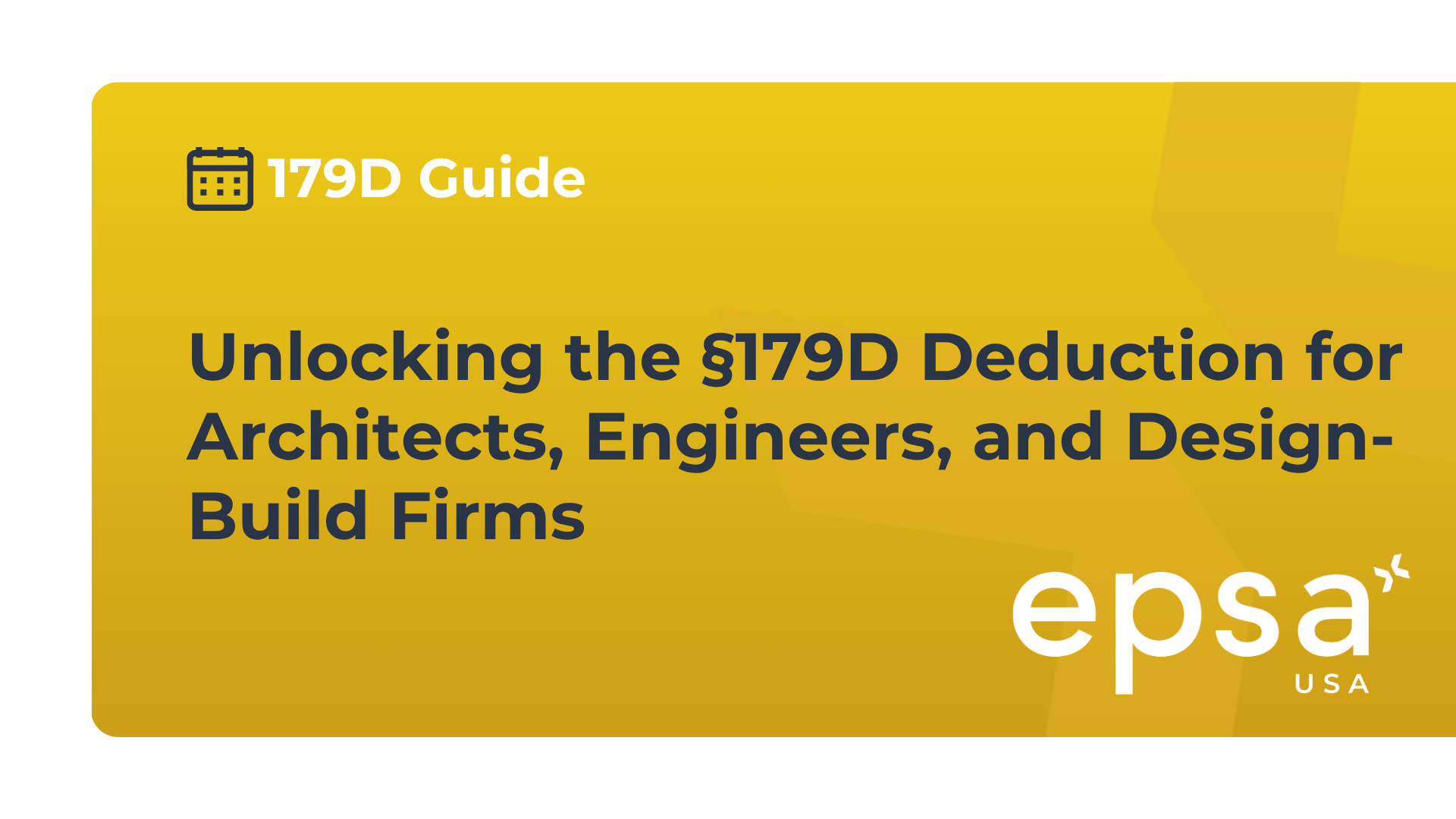179D: A Guide- Unlocking the §179D Deduction for Architects, Engineers, and Design-Build Firms
Published by EPSA USA | June 2025
The §179D Energy Efficient Commercial Buildings Deduction is a powerful federal tax incentive for architects, engineers, design-build contractors, and building owners who implement energy-efficient upgrades in commercial and government-owned buildings.
What Is the §179D Deduction?
Originally introduced in the Energy Policy Act of 2005, the §179D deduction encourages the design and installation of high-performance systems that reduce energy use in three key areas:
- HVAC and hot water systems
- Interior lighting systems
- Building envelope (roof, walls, windows, etc.)
For tax year 2025, qualifying projects may be eligible for a deduction of up to $5.81 per square foot, making §179D one of the most impactful tools for supporting sustainable building design.
Who Can Claim the Deduction?
For privately owned buildings, the building owner typically claims the deduction. But in the case of public buildings—such as government offices, public schools, and hospitals—the deduction can’t be used by the owner because they are tax-exempt.
Instead, public entities can allocate the deduction to the “designer” responsible for the energy-efficient systems. According to IRS Notice 2008-40, a designer may include:
- Architects
- Engineers
- Design-build firms
- Energy consultants who produce technical specifications
If your firm contributed technical plans, specifications, or calculations that directly improved the energy performance of HVAC, lighting, or envelope systems, you may qualify for the deduction—even if you did not own or build the property.
Legal Updates: Why Designer Status Matters More Than Ever
The definition of “designer” has become increasingly important in light of the 2024 Supreme Court ruling in Loper Bright Enterprises v. Raimondo, which overturned the Chevron deference doctrine. Without Chevron, courts may now independently interpret ambiguous tax statutes—potentially opening the door for firms to challenge narrow IRS definitions.
This shift may impact how “designer” is defined under §179D, and strengthen the position of firms whose design contributions were previously overlooked.
How to Secure the §179D Deduction
To claim the deduction, firms must receive a formal allocation letter from the public entity. This document must:
- Clearly identify the property
- Specify the allocating government agency
- Name the firm responsible for the design
In addition, your firm should retain detailed documentation, including:
- Stamped design drawings and system specifications
- Engineering calculations and modeling results
- Contracts and scopes of work
- Correspondence that demonstrates your design involvement
Proactive coordination with tax professionals and building owners is critical to secure and defend your §179D claim.
Why §179D Matters for Your Firm
As the push for energy-efficient infrastructure continues to grow, the §179D deduction remains a valuable opportunity for A&E firms and design professionals committed to sustainability. By taking full advantage of this deduction, your firm can:
- Unlock tens or hundreds of thousands of dollars in tax savings
- Strengthen your firm’s competitive advantage in public sector design work
- Demonstrate your commitment to high-performance, energy-efficient buildings
Work With EPSA USA to Maximize Your §179D Opportunity
At EPSA USA, we specialize in helping architecture, engineering, and design-build firms identify, document, and claim the §179D deduction. Our team of experts will:
- Evaluate your projects for eligibility
- Support allocation letter coordination
- Provide certified third-party energy modeling
- Ensure compliance with the latest IRS regulations
Ready to Explore §179D for Your Firm?
Contact us today to speak with a 179D specialist and learn how we can help you claim the deductions your firm deserves. Contact us today!
Share this article
